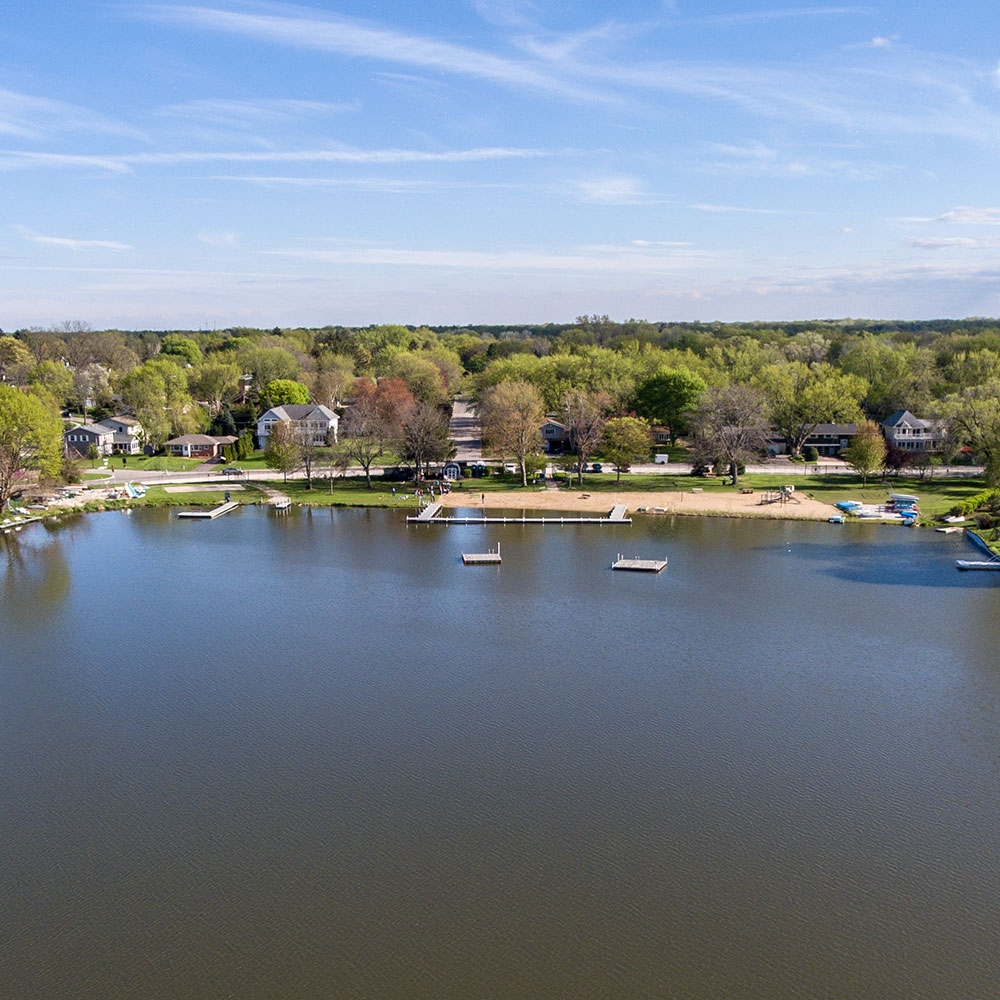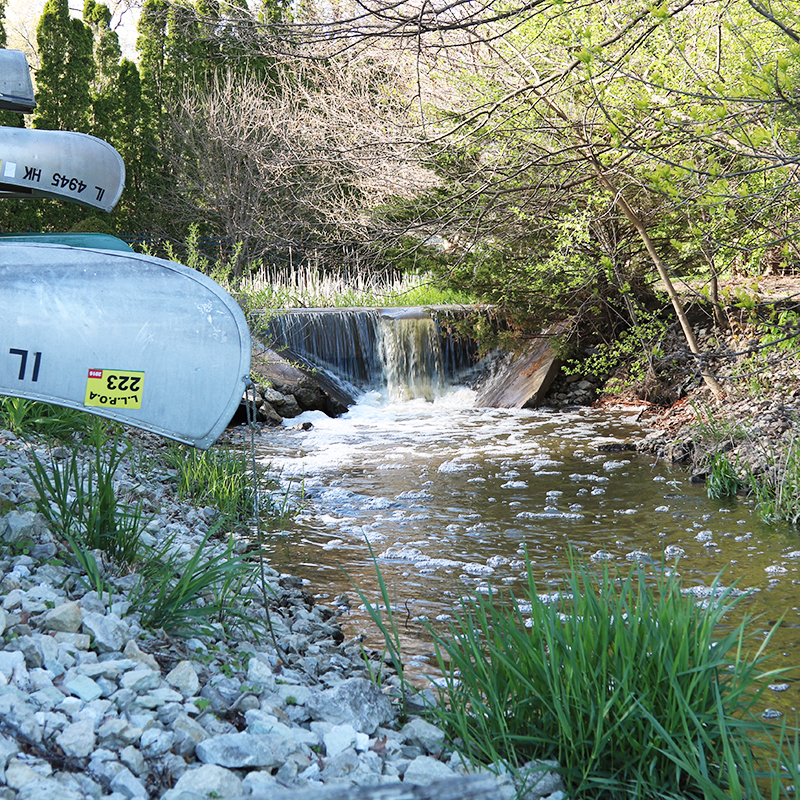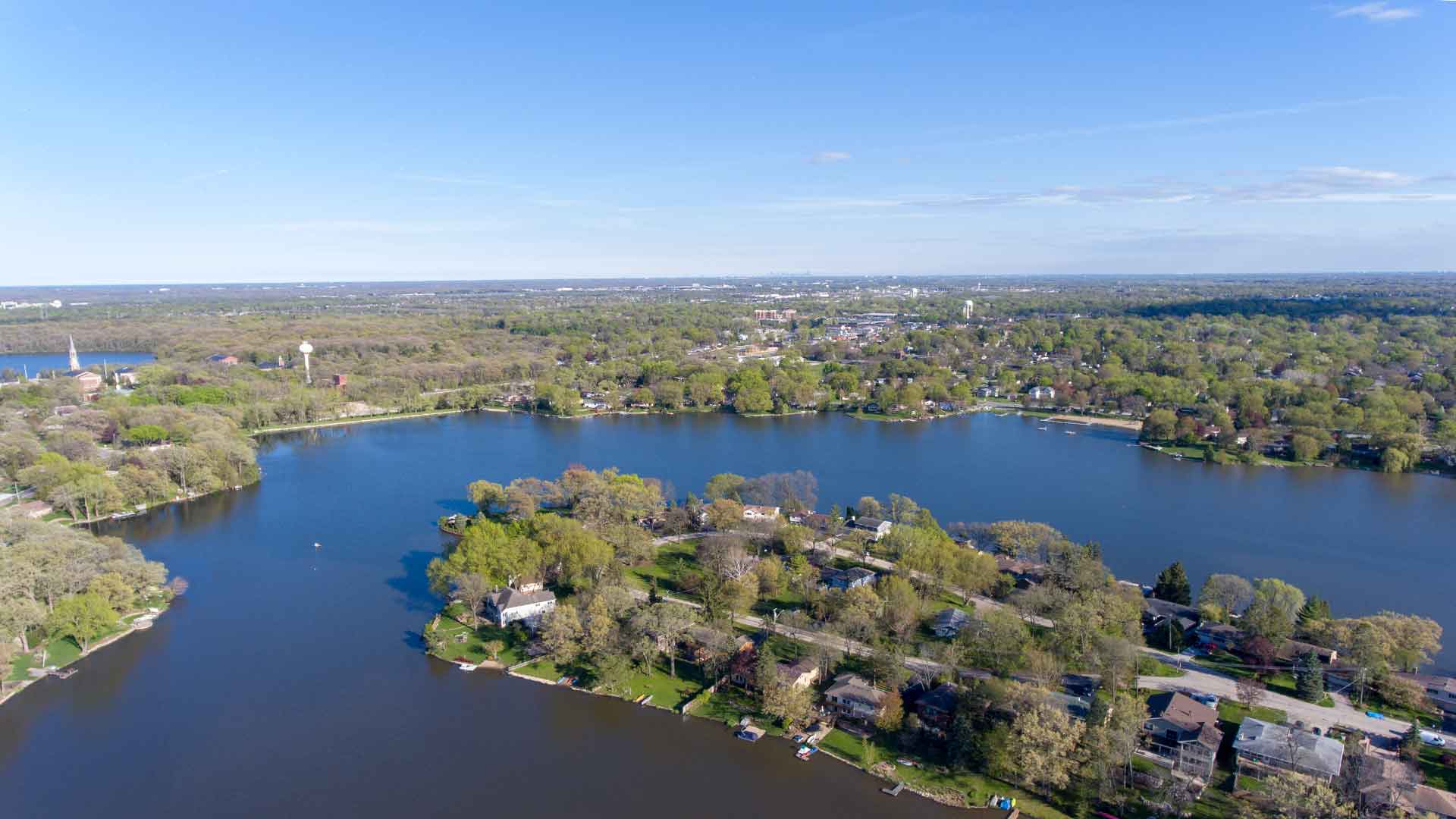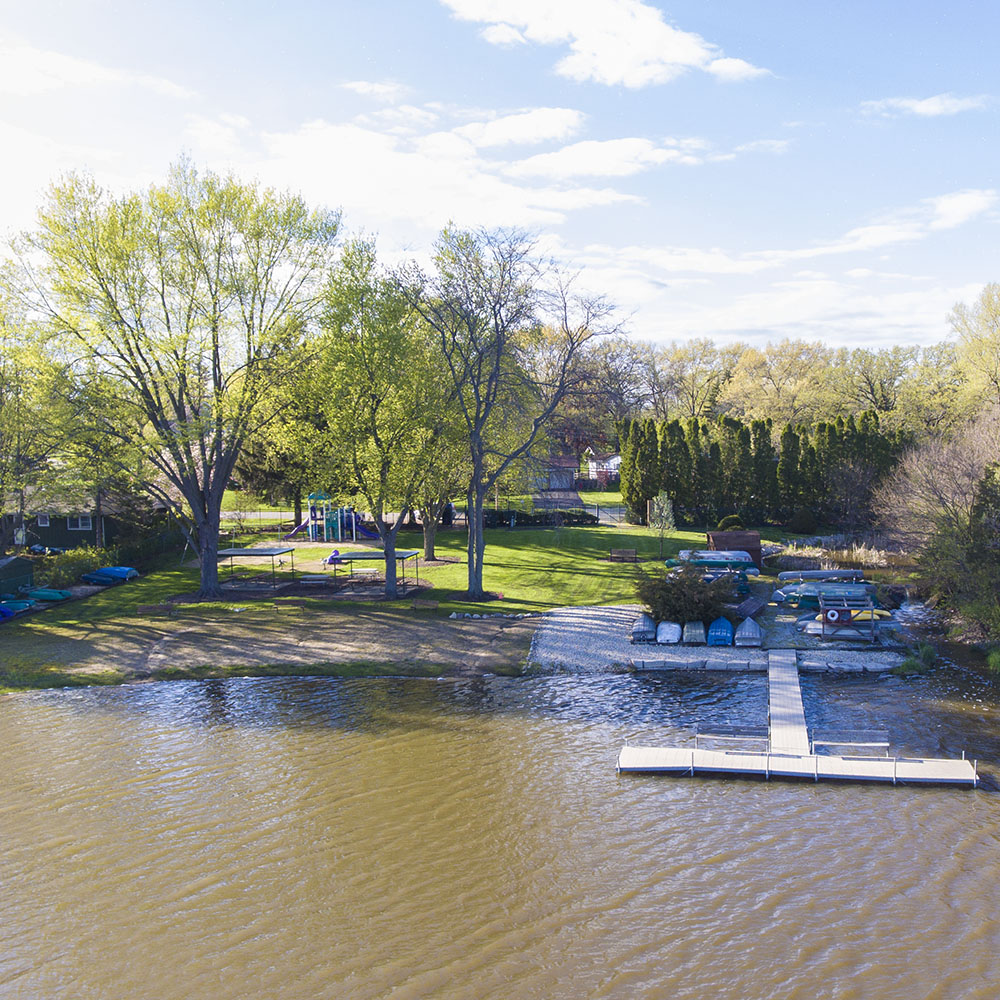Lake Ecology
Learn about the ecology of Loch Lomond Lake.
Our Lake
Loch Lomond is a 75-acre, man-made, shallow, eutrophic (nutrient rich) lake constructed in 1955 by damming the southern branch of Bull Creek as part of the development of the 600-home Loch Lomond subdivision in Mundelein, IL. It is the headwaters (first) of a series of three lakes that drain into the Upper Des Plaines River. The lake is owned and maintained by the Loch Lomond Property Owners Association (LLPOA) and is used for aesthetic and recreational purposes—swimming, fishing, canoeing, paddle boating, kayaking and sailing.
Our lake supports these and many other activities for our residents.
Challenges to Lake Health
The lake drains a sub-watershed of 1439 acres, which in 1955 was largely used for agriculture, but today is a mix of residential, agricultural and commercial. Subsequent development of the land for residential and commercial purposes caused additional suspension of silt due to the phosphorous-laden soil.
The lake is limited in numbers of different aquatic plants, both exotic and invasive. All efforts are focused on encouraging native plants, minimizing invasive plants and removing exotic aquatic plants. Curly leaf pond weed and algae are our most invasive but natural species found in our lake and most lakes in Lake County, Illinois.
Keeping Our Lake Healthy
The LLPOA has partnered with several governmental agencies as well as private vendors to help us with these ongoing challenges as we focus on a balance in nature. We intervene with strategies but let nature take its course in determining our success and its direction. Based upon scientific evidence, we set the course for our next challenge in managing fish habitat, aquatic plants, microbiomes, water quality and other flora and fauna in Loch Lomond lake.
The LLPOA supports the health of our lake with the following strategies:
- Replanting only native plants, both aquatic and terrestrial
- Maintaining water clarity as to allow sunlight for submergent native plants
- Providing an education model of gardens and property maintenance for others to follow.
- Promoting lake education at the annual LochFest event.
- Developing environmental and conservation activities to build community awareness
- Providing news articles, monographs and archives for residents to research and reference
- Applying for various grants to help support our lake management efforts

How Residents Can Support Lake Health

Remember—what you leave on your lawn ends up in our lake.
All residents can help with the Lake Management to establish best practices.
- Keep your property clean and clear of debris.
- Eliminate competing vegetation from the lake, shoreline and your property
- Protect shoreline from erosion
- Filter run-off by establishing “buffer zones”
- Reduce phosphorous loading—use only approved fertilizers and detergents away from the lake
- Participate in lake management by getting out the messages of conservation and ecology!
The Future of Our Lake
Loch Lomond Lake’s future is dependent upon its residents. If you take care of your property and attend to the common areas of our community, it should flourish well into the future. Our impact on nature should be as minimal as possible. Loch Lomond Lake must be carefully monitored and managed for the sake of its wildlife, vegetation, and for the best interests of the community as a whole. Lake management will always be an integral part of the Loch Lomond community.


